How to Solve AWS WAF Captcha When Web Scraping: A Compenhensive Guide

Lucas Mitchell
Automation Engineer
17-Sep-2025
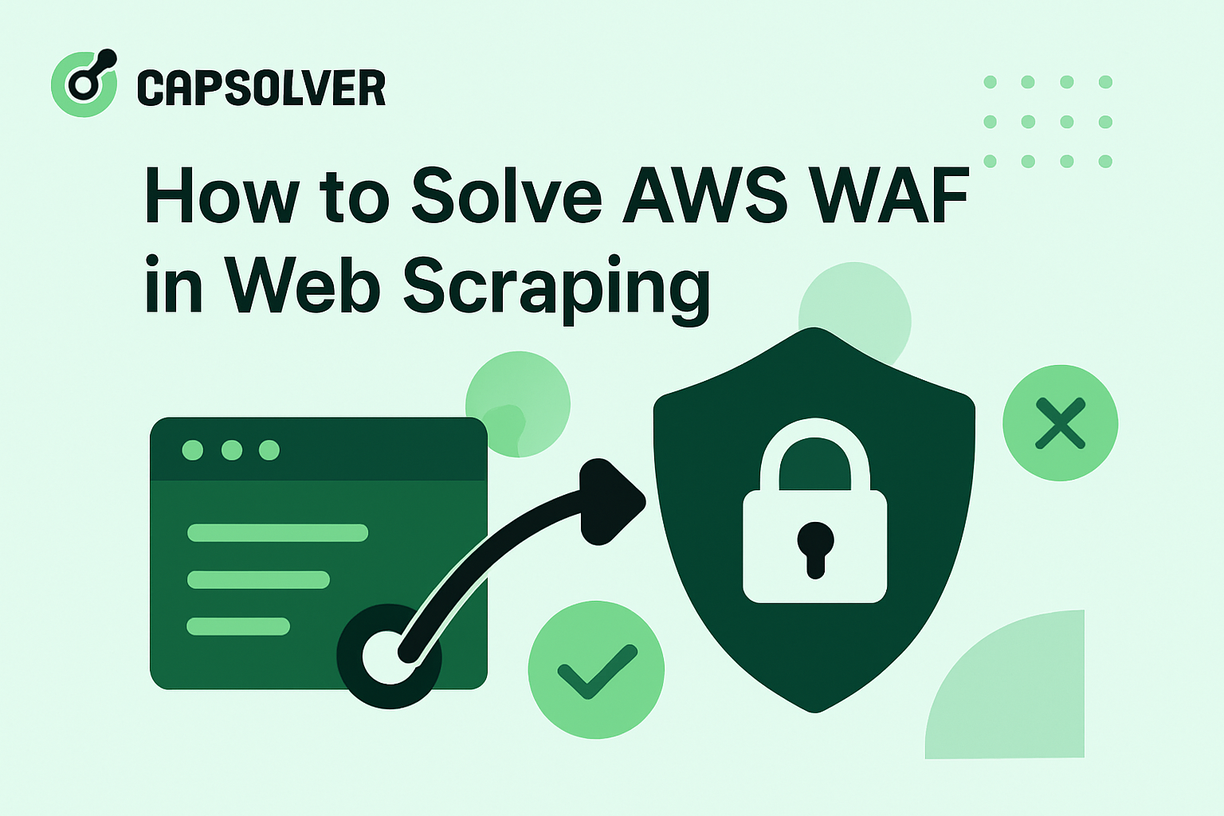
Key Takeaways
- Successfully navigating AWS WAF Captchas in web scraping is achievable with strategic solutions.
- Specialized CAPTCHA-solving services, particularly CapSolver, offer the most efficient and reliable solve method.
- A multi-layered approach combining technical solutions with ethical considerations ensures sustained scraping success.
- Implementing robust proxy rotation and user-agent management significantly reduces detection risks.
- Simulating human behavior with headless browsers helps evade advanced bot detection mechanisms.
- Effective cookie and session management is crucial for maintaining persistent, legitimate scraping sessions.
- Optimizing request throttling and customizing HTTP headers further enhances stealth and avoids WAF triggers.
Introduction
Web scraping, an essential process for gathering vast amounts of data, frequently encounters sophisticated defenses designed to thwart automated access. Among these, AWS Web Application Firewall (WAF) Captchas present a significant hurdle, often bringing scraping operations to a halt by demanding human-like verification. This guide offers a comprehensive and definitive approach to effectively solve AWS WAF Captcha when web scraping, ensuring your data collection remains uninterrupted and efficient. It is tailored for developers, data scientists, and businesses aiming to maintain seamless data flows from AWS WAF-protected sites. While various strategies exist, leveraging advanced CAPTCHA-solving services like CapSolver stands out as the premier solution for overcoming these complex challenges.
Understanding AWS WAF Captchas and Their Impact on Web Scraping
AWS WAF Captchas are security mechanisms deployed by Amazon Web Services to differentiate between legitimate human users and automated bots. These challenges are integral to protecting web applications from a spectrum of threats, including web scraping, credential stuffing, and distributed denial-of-service (DDoS) attacks. When AWS WAF identifies suspicious activity—such as an unusual volume of requests from a single IP address or atypical browsing patterns—it can present a CAPTCHA challenge. This requires the client to solve a puzzle, like identifying images or retyping distorted text, before granting access to the requested content. Traditional web scraping tools often struggle to interact with these dynamic and interactive challenges, leading to blocked requests, incomplete data extraction, and significant operational delays. Overcoming AWS WAF Captchas necessitates a strategic blend of technical solutions, a deep understanding of bot detection principles, and continuous adaptation to evolving security measures. This proactive approach is key to successfully solve AWS WAF Captcha when web scraping*
1. Specialized CAPTCHA Solving Services: CapSolver
Specialized CAPTCHA solving services represent the most effective and efficient method for solving AWS WAF Captchas. These platforms, like CapSolver, employ advanced artificial intelligence and, in some instances, human verification to automatically solve diverse CAPTCHA types. When your web scraper encounters an AWS WAF Captcha, the service receives the challenge details, processes it, and returns a valid token or cookie. This token then allows your scraper to proceed with its requests, significantly reducing manual intervention and boosting scraping efficiency. This approach is particularly valuable for complex or evolving CAPTCHA types that are difficult to address with custom scripts. To effectively solve AWS WAF Captcha when web scraping, these services are indispensable.
Why CapSolver is Your Premier Solution for AWS WAF Captchas
CapSolver distinguishes itself as a leading solution for navigating AWS WAF Captchas due to its robust capabilities and seamless integration. It provides a dedicated API specifically engineered to manage the intricacies of AWS WAF challenges. The process involves extracting crucial parameters from the WAF challenge page, such as iv, key, context, and challengeJS, and transmitting them to CapSolver. The service then processes these parameters with exceptional accuracy and speed, delivering an aws-waf-token cookie. This token can be effortlessly integrated into your subsequent requests, enabling a smooth solve of the WAF. This makes CapSolver a reliable and scalable choice for large-scale web scraping operations. CapSolver's advanced AI-powered engine undergoes continuous updates, ensuring it adapts to new CAPTCHA types and maintains consistent performance, thereby guaranteeing uninterrupted data streams.
According to a report by Grand View Research, the global CAPTCHA market size was valued at USD 307.9 million in 2022 and is expected to grow at a compound annual growth rate (CAGR) of 15.1% from 2023 to 2030, underscoring the increasing reliance on such specialized services.
CapSolver Integration Example (Python)
python
import requests
import re
import time
# Your CapSolver API Key
CAPSOLVER_API_KEY = "YOUR_CAPSOLVER_API_KEY"
CAPSOLVER_CREATE_TASK_ENDPOINT = "https://api.capsolver.com/createTask"
CAPSOLVER_GET_TASK_RESULT_ENDPOINT = "https://api.capsolver.com/getTaskResult"
# The URL of the website protected by AWS WAF
WEBSITE_URL = "https://efw47fpad9.execute-api.us-east-1.amazonaws.com/latest" # Example URL
def solve_aws_waf_captcha(website_url, capsolver_api_key):
client = requests.Session()
response = client.get(website_url)
script_content = response.text
key_match = re.search(r'"key":"([^"]+)"', script_content)
iv_match = re.search(r'"iv":"([^"]+)"', script_content)
context_match = re.search(r'"context":"([^"]+)"', script_content)
jschallenge_match = re.search(r'<script.*?src="(.*?)".*?></script>', script_content)
key = key_match.group(1) if key_match else None
iv = iv_match.group(1) if iv_match else None
context = context_match.group(1) if context_match else None
jschallenge = jschallenge_match.group(1) if jschallenge_match else None
if not all([key, iv, context, jschallenge]):
print("Error: AWS WAF parameters not found in the page content.")
return None
task_payload = {
"clientKey": capsolver_api_key,
"task": {
"type": "AntiAwsWafTaskProxyLess",
"websiteURL": website_url,
"awsKey": key,
"awsIv": iv,
"awsContext": context,
"awsChallengeJS": jschallenge
}
}
create_task_response = client.post(CAPSOLVER_CREATE_TASK_ENDPOINT, json=task_payload).json()
task_id = create_task_response.get('taskId')
if not task_id:
print(f"Error creating CapSolver task: {create_task_response.get('errorId')}, {create_task_response.get('errorCode')}")
return None
print(f"CapSolver task created with ID: {task_id}")
# Poll for task result
for _ in range(10): # Try up to 10 times with 5-second intervals
time.sleep(5)
get_result_payload = {"clientKey": capsolver_api_key, "taskId": task_id}
get_result_response = client.post(CAPSOLVER_GET_TASK_RESULT_ENDPOINT, json=get_result_payload).json()
if get_result_response.get('status') == 'ready':
aws_waf_token_cookie = get_result_response['solution']['cookie']
print("CapSolver successfully solved the CAPTCHA.")
return aws_waf_token_cookie
elif get_result_response.get('status') == 'failed':
print(f"CapSolver task failed: {get_result_response.get('errorId')}, {get_result_response.get('errorCode')}")
return None
print("CapSolver task timed out.")
return None
# Example usage:
# aws_waf_token = solve_aws_waf_captcha(WEBSITE_URL, CAPSOLVER_API_KEY)
# if aws_waf_token:
# print(f"Received AWS WAF Token: {aws_waf_token}")
# # Use the token in your subsequent requests
# final_response = requests.get(WEBSITE_URL, cookies={"aws-waf-token": aws_waf_token})
# print(final_response.text)This code snippet illustrates how to integrate with CapSolver to acquire the necessary aws-waf-token cookie. For comprehensive details on integrating CapSolver, refer to their official documentation: CapSolver AWS WAF Documentation
2. Implementing Robust Proxy Rotation and User-Agent Management
AWS WAF frequently identifies and blocks scraping attempts originating from the same IP address or using consistent user-agent strings. To solve
this, a robust proxy rotation system is essential. This involves routing your scraping requests through a diverse pool of IP addresses, making each request appear to come from a different source. Residential proxies, which are IP addresses assigned by Internet Service Providers to homeowners, prove particularly effective. They are less likely to be flagged as suspicious compared to datacenter proxies. This strategy is crucial to successfully solve AWS WAF Captcha when web scraping.
Alongside proxy rotation, managing user-agent strings is equally important. A user-agent string identifies the browser and operating system making a request. Bots often use default or outdated user-agent strings, which are easily detectable. By rotating through a list of legitimate and up-to-date user-agent strings, your scraper can mimic requests from various browsers and devices. This further reduces the likelihood of detection by AWS WAF. This dual approach creates a more natural and distributed request pattern, making it harder for WAFs to identify and block your scraping activities. For more insights on preventing detection, exploreHow to Avoid IP Bans when Using Captcha Solver. A report by Proxyway indicates that using high-quality residential proxies can increase scraping success rates by up to 90%.
3. Simulating Human Behavior with Headless Browsers
AWS WAF and other anti-bot systems are increasingly adept at detecting automated scripts by analyzing behavioral patterns. Bots often exhibit unnatural speed, predictable click patterns, or a complete absence of mouse movements. To counter this, simulating human behavior becomes indispensable. Headless browsers, such as Selenium or Playwright, when properly configured, can execute JavaScript, render pages, and interact with elements much like a real user. This capability enables more complex interactions that can solve
WAF Captchas relying on behavioral analysis. However, using headless browsers alone is insufficient; they must be configured to mimic human-like delays, random mouse movements, and natural scrolling patterns.
Techniques for Human-like Simulation
- Random Delays: Introduce unpredictable pauses between actions (e.g., clicks, typing) to avoid robotic, predictable timing.
- Mouse Movements: Simulate realistic mouse trajectories and clicks, rather than directly clicking elements. This involves moving the cursor across the screen before clicking.
- Scrolling: Implement smooth, human-like scrolling behavior, avoiding instant jumps to page sections. This can involve varying scroll speeds and distances.
- Typing Speed: Vary typing speed and occasionally introduce typos (and subsequent corrections) when filling out forms, mirroring human input.
- Browser Fingerprinting: Ensure the headless browser's fingerprint (e.g., user agent, screen resolution, installed plugins, WebGL data) matches that of a common human user. Specialized tools and libraries can assist in evading detection based on these unique browser characteristics.
4. Advanced Cookie and Session Management
Effective cookie and session management is paramount for maintaining persistent scraping sessions and minimizing the frequency of CAPTCHA challenges. Upon successfully solving an AWS WAF Captcha, the target website typically issues specific cookies that signify a validated session. Your scraper must possess the capability to accurately store and subsequently reuse these cookies for all requests within the same session. Failure to do so will inevitably lead to repeated CAPTCHA challenges, significantly impeding your data extraction efforts. Proper cookie management makes your scraper appear as a continuous, legitimate user, rather than a series of disconnected, suspicious requests. This meticulous approach is fundamental to effectively solve AWS WAF Captcha when web scraping
5. Optimizing Request Throttling and Rate Limiting
Aggressive and rapid request patterns are a primary indicator of automated bot activity. Implementing intelligent request throttling and rate limiting is crucial to avoid triggering AWS WAF's detection mechanisms. This strategy involves introducing calculated delays between your requests and limiting the total number of requests made within a specific timeframe. The objective is to meticulously mimic human browsing behavior, which naturally includes pauses between page loads and interactions. Randomizing these delays can further enhance stealth, making it considerably more challenging for WAFs to identify predictable bot patterns. A well-tuned throttling strategy can significantly reduce the likelihood of encountering CAPTCHAs
6. Customizing HTTP Headers for Authenticity
Beyond merely rotating the User-Agent, the entire set of HTTP headers accompanying each request plays a pivotal role in how AWS WAF perceives your scraping activity. Bots frequently transmit incomplete, inconsistent, or unusual headers, which are easily flagged as suspicious. To circumvent detection, it is imperative to meticulously customize your request headers to closely emulate those of a legitimate web browser. This includes setting headers such as Accept, Accept-Language, Accept-Encoding, and Connection, among others. Furthermore, maintaining consistency in these headers throughout a scraping session, unless intentionally varied as part of a human-like simulation, is equally important. Inconsistent headers can raise red flags, leading to AWS WAF Captcha challenges. This detailed attention to HTTP headers is a key component to successfully solve AWS WAF Captcha when web scraping
7. Web Scraping APIs and Integrated Solutions
While individual techniques like proxy rotation and user-agent management are effective, managing them separately can become complex. Integrated web scraping solutions offer a significant advantage by handling the entire spectrum of anti-bot challenges, including AWS WAF Captchas. These platforms provide a unified API that combines advanced proxy networks, browser rendering, and intelligent CAPTCHA solving mechanisms. They abstract away the complexities of anti-bot evasion, allowing developers to focus on data extraction. This holistic approach ensures higher success rates and reduces the operational overhead of maintaining multiple bypass strategies. Using such an API is a powerful way to solve AWS WAF Captcha when web scraping
8. Employing CAPTCHA Farms or Human Solvers
Another method to address CAPTCHA challenges involves using CAPTCHA farms or human-powered solving services. These services employ human workers to manually solve CAPTCHAs in real-time. While this approach can be effective for even the most complex and novel CAPTCHA types, it comes with significant drawbacks. The cost per solved CAPTCHA is typically higher compared to automated services, and there can be ethical considerations regarding the labor practices of some providers. Additionally, the reliance on manual intervention introduces latency, which may not be suitable for high-speed or large-scale scraping operations. While it is a viable option to solve AWS WAF Captcha when web scraping, it is generally less efficient and more expensive than automated solutions like CapSolver.
9. JavaScript Rendering and Browser Fingerprinting Evasion
Modern web applications heavily rely on JavaScript for rendering content and dynamic interactions. AWS WAF often employs JavaScript challenges and browser fingerprinting techniques to detect and block bots. These methods analyze how a browser executes JavaScript, its unique characteristics (like installed plugins, screen resolution, WebGL data), and its overall environment. To solve these sophisticated checks, your scraping solution must be capable of fully rendering JavaScript. This often involves using headless browsers or specialized scraping APIs that handle JavaScript execution natively. Furthermore, evading browser fingerprinting requires tools that can modify or randomize these unique browser characteristics, making your scraper indistinguishable from a legitimate user.
10. Monitoring and Adapting Your Scraping Strategy
The landscape of anti-bot measures, including AWS WAF Captchas, is constantly evolving. What works today might not work tomorrow. Therefore, continuous monitoring and adaptation of your web scraping strategy are absolutely critical for sustained success. This involves regularly analyzing your scraping logs, tracking error rates, and identifying patterns in blocked requests or CAPTCHA encounters. Implementing A/B testing for different scraping methods or configurations can help you quickly identify the most effective approaches. Staying informed about the latest anti-bot techniques and WAF updates is also essential..
Comparison Summary: Strategies to Solve AWS WAF Captcha When Web Scraping
To provide a clear overview, the following table compares key solutions for solving AWS WAF Captchas, highlighting their complexity, cost, effectiveness, and primary benefits. This summary helps in choosing the most suitable approach to solve AWS WAF Captcha when web scraping.
| Solution | Complexity | Cost | Effectiveness | Key Benefit |
|---|---|---|---|---|
| 1. Specialized CAPTCHA Solving Services (CapSolver) | Low | Medium | High | Direct, automated, and reliable CAPTCHA solve with high accuracy. |
| 2. Proxy Rotation & User-Agent Management | Medium | Medium | Medium | Reduces detection by mimicking diverse, legitimate traffic patterns. |
| 3. Human Behavior Simulation | High | Low | High | Evades behavioral analysis by anti-bot systems through realistic interactions. |
| 4. Advanced Cookie & Session Management | Medium | Low | High | Maintains persistent sessions, reducing repeated CAPTCHA challenges. |
| 5. Request Throttling & Rate Limiting | Low | Low | Medium | Avoids triggering rate limits and appears more human-like in request patterns. |
| 6. Customizing HTTP Headers | Medium | Low | Medium | Mimics legitimate browser headers to avoid flagging and improve authenticity. |
| 7. Web Scraping APIs & Integrated Solutions | Low | High | High | All-in-one solution abstracting complexities of anti-bot evasion. |
| 8. CAPTCHA Farms / Human Solvers | Medium | High | High | Effective for complex CAPTCHAs, but often costly and slower. |
| 9. JS Rendering & Browser Fingerprinting Evasion | High | Medium | High | Solve advanced WAF checks based on JavaScript execution and unique browser characteristics. |
Why CapSolver is Your Go-To for AWS WAF Captcha Challenges
Throughout this comprehensive guide, we have explored a multitude of strategies to effectively solve AWS WAF Captcha when web scraping. Among these diverse approaches, specialized CAPTCHA solving services consistently emerge as the most efficient and reliable. CapSolver, in particular, offers a robust, developer-friendly, and highly effective solution that integrates seamlessly into your existing scraping workflows. Its advanced AI-powered engine is specifically engineered to handle the complexities of various CAPTCHA types, including those deployed by AWS WAF, with remarkable accuracy and speed. By offloading the intricate CAPTCHA solving process to CapSolver, you can significantly reduce the time, resources, and development effort typically spent on anti-bot evasion. This allows your team to concentrate on the core task of extracting valuable data.
CapSolver's API is designed for ease of integration, supported by clear documentation and compatibility with numerous programming languages. Whether your scraping efforts encounter reCAPTCHA, Cloudflare Turnstile, or custom image-based puzzles, CapSolver provides a consistent, scalable, and highly reliable solution. This unwavering reliability is crucial for maintaining uninterrupted data streams, especially within dynamic web environments where CAPTCHA challenges can evolve rapidly. For any serious web scraping operation confronting AWS WAF Captchas, CapSolver offers a powerful and cost-effective tool to ensure sustained success. For further insights into selecting the optimal CAPTCHA solver, What is the best CAPTCHA solver in 2025
Conclusion and Call to Action
Successfully navigating the complexities of AWS WAF Captchas in web scraping demands a multi-faceted and adaptive strategy. By combining robust techniques such as intelligent proxy rotation, human behavior simulation, meticulous header management, and advanced session handling, web scrapers can significantly enhance their resilience against anti-bot measures. However, for unparalleled efficiency, reliability, and scalability, leveraging specialized CAPTCHA solving services like CapSolver is not just an option, but a necessity. CapSolver provides a powerful, AI-driven solution that seamlessly integrates into your workflow, ensuring that AWS WAF Captchas do not impede your critical data collection efforts. This strategic partnership allows you to focus on data analysis and insights, rather than constant anti-bot evasion.
Don't let AWS WAF Captchas hinder your data collection efforts any longer. It's time to explore the power of automated CAPTCHA solving and elevate your web scraping capabilities today. Ready to streamline your scraping operations and solve AWS WAF Captchas with unparalleled ease and efficiency?
Frequently Asked Questions (FAQ)
Q1: What is an AWS WAF Captcha and why do I encounter it during web scraping?
AWS WAF Captchas are security challenges deployed by Amazon Web Services to differentiate between human users and automated bots. You encounter them during web scraping when AWS WAF detects suspicious activity, such as a high volume of requests from a single IP address, unusual user-agent strings, or behavioral patterns indicative of a bot.
Q2: Can I Solve AWS WAF Captchas without using a third-party service?
While it is technically possible to implement some solve techniques without a third-party service (e.g., proxy rotation, user-agent management, human behavior simulation), these methods often demand significant development effort and continuous maintenance. For complex or rapidly evolving CAPTCHA types, a dedicated CAPTCHA solving service like CapSolver offers a more reliable, efficient, and scalable solution, especially for large-scale or critical scraping operations. It simplifies the process to solve AWS WAF Captcha when web scraping.
Q3: How does CapSolver help with AWS WAF Captchas?
CapSolver provides an AI-powered API that automates the process of solving AWS WAF Captchas. When your scraper encounters a WAF challenge, you send the challenge parameters (like iv, key, context, challengeJS) to CapSolver. The service then solves the CAPTCHA and returns an aws-waf-token cookie, which you can use in your subsequent requests to solve the WAF and access the protected content.
Q4: Is it legal to solve AWS WAF Captchas for web scraping?
The legality of web scraping and solving anti-bot measures like AWS WAF Captchas is a complex area, varying by jurisdiction and the terms of service of the target website. Generally, scraping publicly available data is often considered legal, but solving security measures can be viewed differently. It is crucial to consult legal counsel and adhere to ethical scraping practices, including respecting robots.txt files and avoiding excessive load on servers. Always ensure your activities comply with applicable laws and website policies
Q5: What are some best practices for sustainable web scraping against AWS WAF?
For sustainable web scraping against AWS WAF, adopt a multi-layered approach: use high-quality, rotating proxies; manage user-agent strings effectively; simulate human-like behavior with random delays and interactions; implement request throttling; maintain good IP reputation; and leverage dedicated CAPTCHA solving services like CapSolver or integrated scraping APIs. Regularly monitor your scraping performance and adapt your strategies as anti-bot measures evolve. Prioritize ethical considerations and avoid causing undue strain on target servers to effectively solve AWS WAF Captcha when web scraping
Compliance Disclaimer: The information provided on this blog is for informational purposes only. CapSolver is committed to compliance with all applicable laws and regulations. The use of the CapSolver network for illegal, fraudulent, or abusive activities is strictly prohibited and will be investigated. Our captcha-solving solutions enhance user experience while ensuring 100% compliance in helping solve captcha difficulties during public data crawling. We encourage responsible use of our services. For more information, please visit our Terms of Service and Privacy Policy.
More
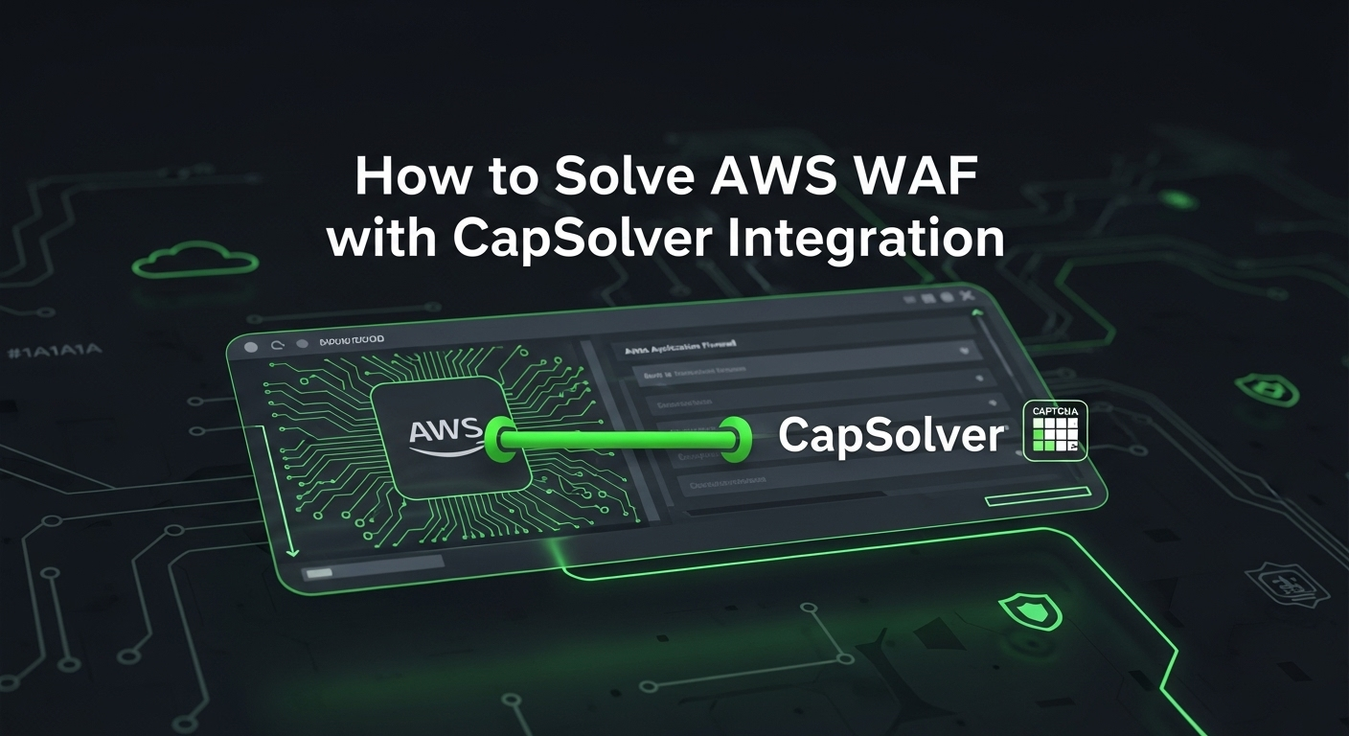
Solving AWS WAF Bot Protection: Advanced Strategies and CapSolver Integration
Discover advanced strategies for AWS WAF bot protection, including custom rules and CapSolver integration for seamless CAPTCHA solution in compliant business scenarios. Safeguard your web applications effectively.

Lucas Mitchell
23-Sep-2025
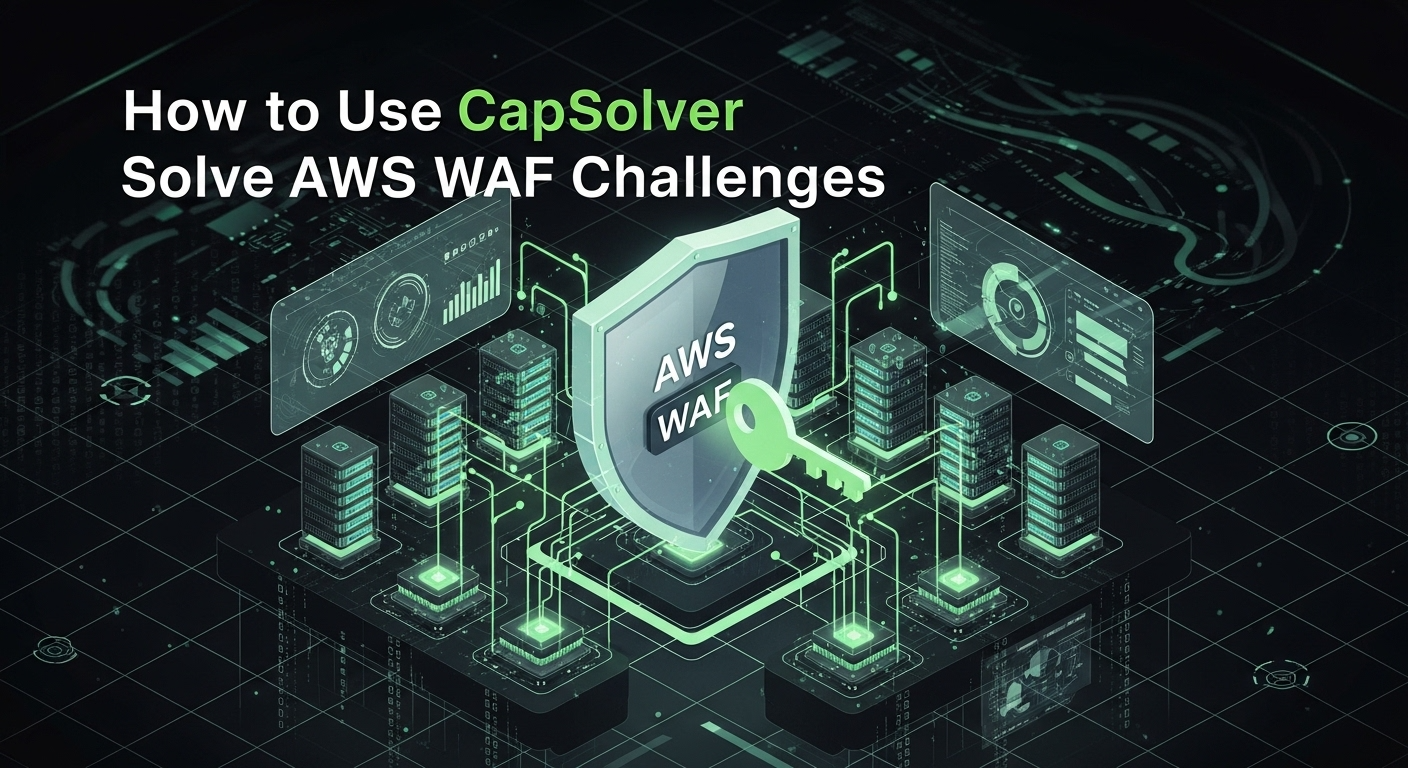
How to Solve AWS WAF Challenges with CapSolver: The Complete Guide in 2025
Master AWS WAF challenges with CapSolver in 2025. This complete guide offers 10 detailed solutions, code examples, and expert strategies for seamless web scraping and data extraction.

Lucas Mitchell
19-Sep-2025
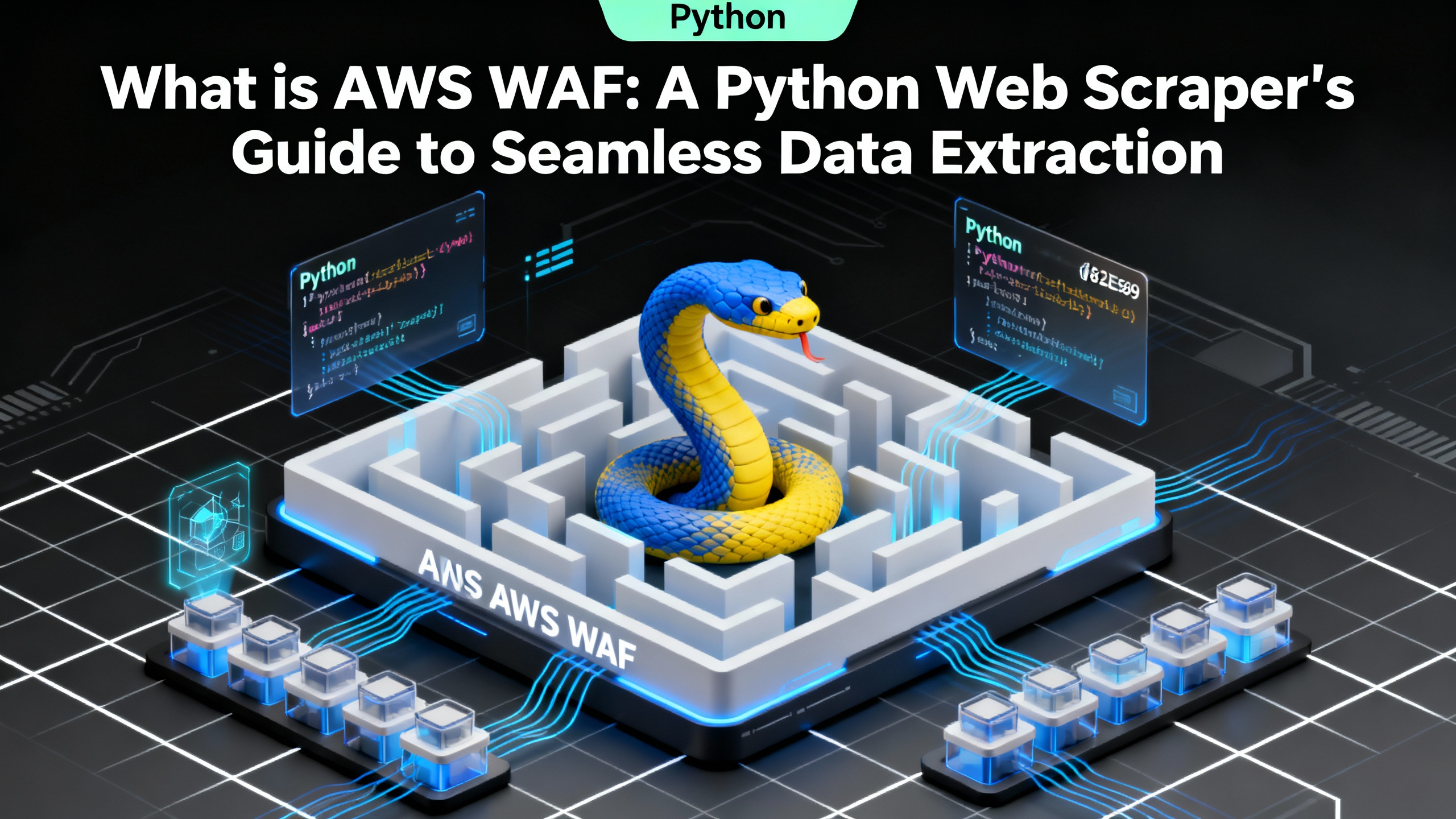
What is AWS WAF: A Python Web Scraper's Guide to Seamless Data Extraction
Learn how to effectively solve AWS WAF challenges in web scraping using Python and CapSolver. This comprehensive guide covers token-based and recognition-based solutions, advanced strategies, and code examples fo easy data extraction.

Lucas Mitchell
19-Sep-2025
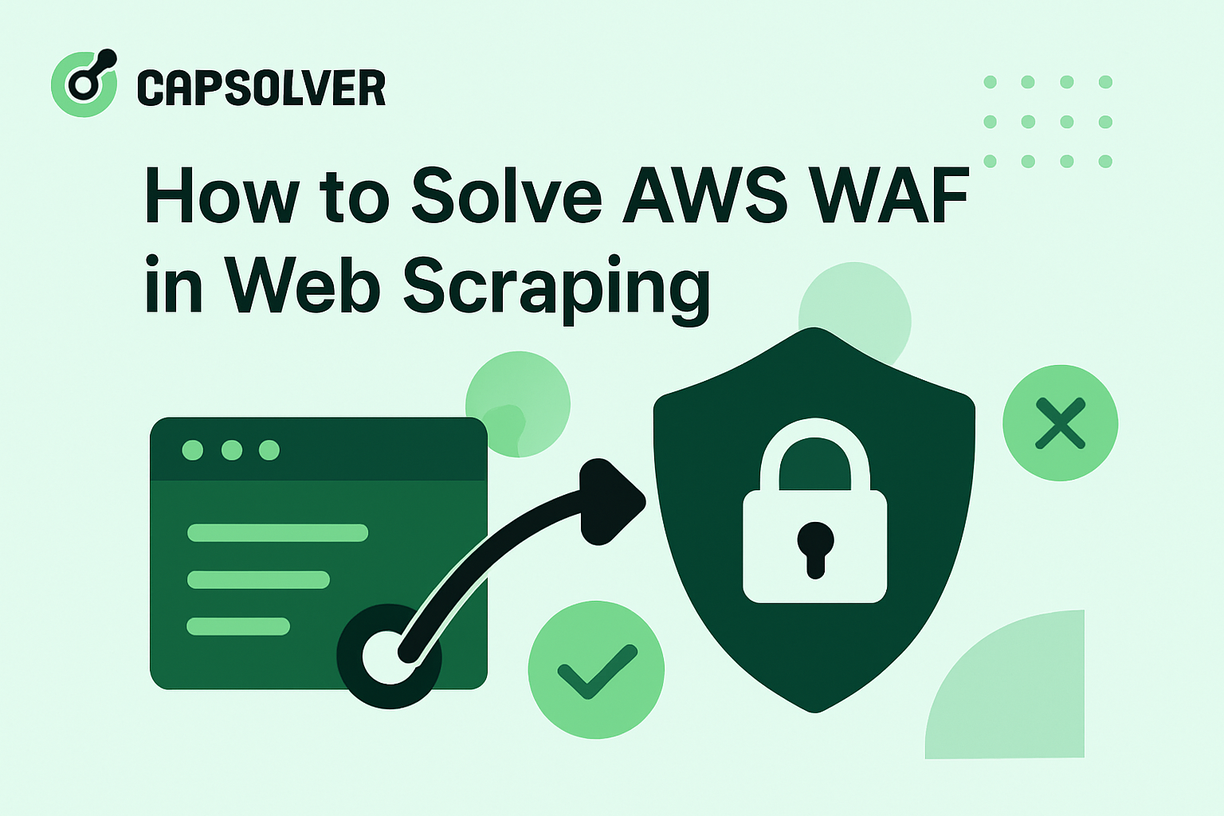
How to Solve AWS WAF Captcha When Web Scraping: A Compenhensive Guide
Solve AWS WAF Captcha in web scraping with CapSolver. Boost efficiency, solve challenges, and keep data flowing seamlessly.

Lucas Mitchell
17-Sep-2025

How to Solve CAPTCHA with Selenium and Node.js when Scraping
If you’re facing continuous CAPTCHA issues in your scraping efforts, consider using some tools and their advanced technology to ensure you have a reliable solution

Lucas Mitchell
15-Oct-2024

Solving 403 Forbidden Errors When Crawling Websites with Python
Learn how to overcome 403 Forbidden errors when crawling websites with Python. This guide covers IP rotation, user-agent spoofing, request throttling, authentication handling, and using headless browsers to bypass access restrictions and continue web scraping successfully.

Sora Fujimoto
01-Aug-2024

